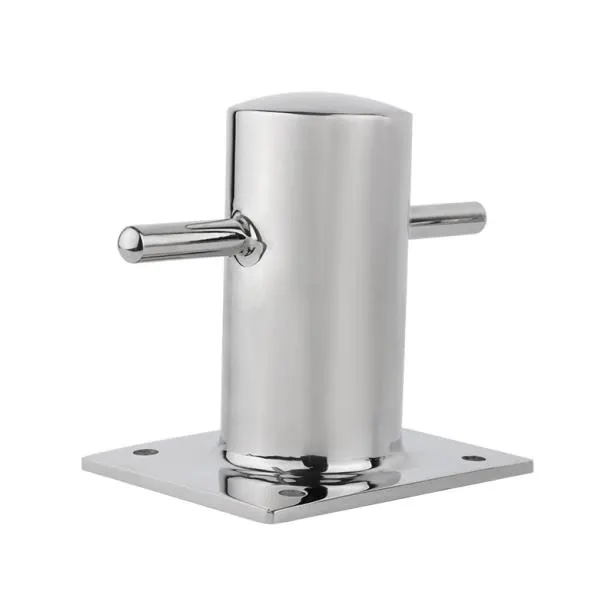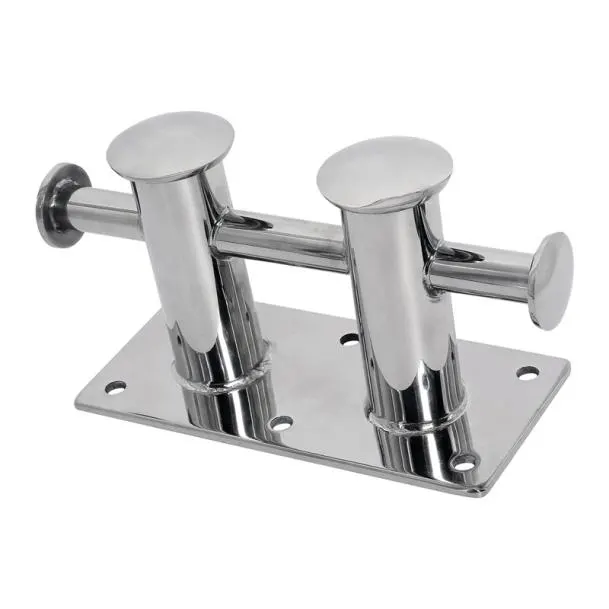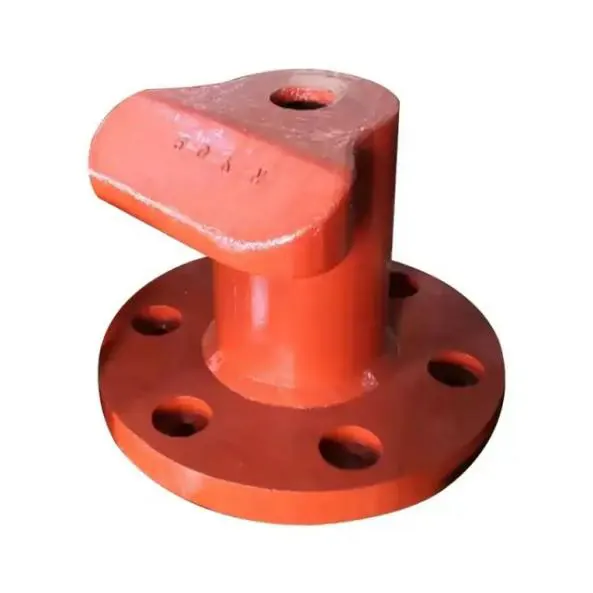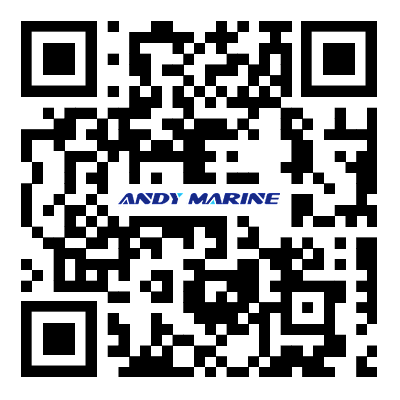- English
- Español
- Português
- русский
- Français
- 日本語
- Deutsch
- tiếng Việt
- Italiano
- Nederlands
- ภาษาไทย
- Polski
- 한국어
- Svenska
- magyar
- Malay
- বাংলা ভাষার
- Dansk
- Suomi
- हिन्दी
- Pilipino
- Türkçe
- Gaeilge
- العربية
- Indonesia
- Norsk
- تمل
- český
- ελληνικά
- український
- Javanese
- فارسی
- தமிழ்
- తెలుగు
- नेपाली
- Burmese
- български
- ລາວ
- Latine
- Қазақша
- Euskal
- Azərbaycan
- Slovenský jazyk
- Македонски
- Lietuvos
- Eesti Keel
- Română
- Slovenski
- मराठी
- Srpski језик
The many types of marine bollards
2023-11-07
The word “bollard” probably comes from the word “bole”—as in the bole of a tree. The first reported use is from a Scottish newspaper in 1763 referencing a marine bollard, used at a dock to moor boats. The use of the word spread, and now mooring bollards are known to every English-speaking mariner. A standard specification of a tugboat’s power, similar to a car’s horsepower, is known as its bollard pull.
The bollard pull test
Countries around the world certify bollard pull in very similar ways. Each country may have one or more institutions able to do the certification. The American Bureau of Shipping (ABS) provides one such test standard (part 5, chapter 3, section A1).
The test seems simple. The tester hooks a boat on the water to a bollard on shore with a hawser (a thick marine rope.) This hawser is fitted with a dynamometer. The dynamometer measures the load on the rope when the tugboat is moving forward. When the boat’s propellers are moving at maximum thrust, the total power reported by the dynamometer is marked down as the bollard pull.
However, the real world makes this test a little more complicated. Several factors need to be considered that modify the load on the dynamometer. These include:
Water current: if the propellers are moving against water flow, it adds another vector of force.
Water salinity: the density of saline water is higher than fresh water, and density changes the total force required by the propellers. This must be measured and adjusted to standard.
Angle of the rope: the dynamometer is configured to the horizontal. Any angle between bollard and vessel must be measured, and the resultant change in force adjusted.
Engine heat and output must be at a steady state.
Several trials are averaged together, ignoring sudden pull forces that might be higher than continuous pull forces.
Types of mooring bollards
If you spend time at different docks and marinas with an eye to the mooring posts, you’ll see a wide variety of possible mooring bollards . Which one is installed used is based on several criteria:
·The size and power of the vessels to be moored
·Hawser/rope angles bollard will manage (determined by ship lading and tides)
·Chop of the water
·The space and installation surface available for the bollard
 |
Cleat bollard Cleat bollards are compact, small bollards generally used for small watercraft. You’ll see them on small docks and marina and on several places on the small watercraft themselves. Cleat bollards are a good choice for less experienced seafarer with a smaller boat to wrap their mooring line. Simple figure eights around the cleat are easy to manage with the smaller ropes used for small vessels. Cleats on the vessel are usually fastened by passing a loop through the center of the cleat and then over the “horns.”
One disadvantage to cleats is that the necessary wrap means being close to the bollard to get secure. Bollards, like the bitt bollard below, are designed to be “lassoed” easily, where a loop is thrown over them from a distance.
|
|
Single bitt bollards Bitt bollards, or just bitts, are a venerable mooring bollard shape. It is often cross or lower-case t shaped, featuring a pole with two pegs jutting from either side. Bitts likely inspired the first cannon bollards to be buried on the wharf, in which trunnions acted as the side pegs. Bitt shapes are now both in cross-like posts or shaped with a wider top and slender bottom inspired by cannon shapes. “Bitt” comes from a German word. “Bitt bollard” is a redundancy since bitt signifies a mooring post. Mariners may say bitt, bollard, or bitt-bollard when referring to this specific shape.
Bitt bollards can come in one or two posts. Double bitts often feature two parallel posts with a single long cross-post run through both. Single bitts are useful for throwing a looped hawser over without wrapping precision. They can hold multiple mooring lines. It handles high rope angles well, if the size of the bitt and the width of its pegs are sized appropriately for the rope’s thickness.
|
 |
 |
Double bitt bollards Double bitts are commonly used for larger vessels and variable tides, both on the vessel and off. The double bitt is usually hitched to like a cleat with a series of figure eights. (However, like all large-ship mooring, an experienced sailor will consider the fiber of the mooring line and the direction of strain, and will modify their approach appropriately.) One of the two bitts can be lassoed and from there further secured.
|
|
Tee and kidney bollards Tee and kidney bollards are similarly shaped, though they are used in different ways. Both are short posts with a flat top that protrudes off the main stem.
With the T-top bollard, this lip juts out on only one side of the bollard post, away from the water. It looks a little less like the letter T than it does a bicycle seat, with the front of the seat flat to the post. The “back” of the bicycle seat is long enough to help trap a mooring line that moves to a higher angle, as with the tides. The kidney bollard is similar, but generally has a lip on both sides, with one side slightly larger and bean shaped to help with mooring line positions. Both can be used in heavy-duty applications, usually holding only one line: a large ship may more to many such bollards. However, kidney bollards are used in places without a huge range of tides as they have more tendency to slip.
|
 |
Pillar bollards
Pillar bollards are quite simple: they are posts with a slightly larger top diameter than post diameter. They are quite common on wharfs and are the easiest bollard to lasso, but they tend not to be as secure for high angle mooring lines.
Two craft can use a lasso mooring on the same pillar bollard. However, to allow the first boat in to leave at any time, the second boat should use a technique called “dipping the eye.” In this technique, the eye of the second boat’s rope is passed under and through the eye of the first boat. Either boat can then leave without unmooring the other vessel.
 |
Stag horn bollards Stag horn bollards are often used for large commercial vessels on big wharfs—they are just a dock bollard, not one used on the boat. Stag horns accept multiple mooring lines. The projected “horn” on these bollards and the complexity of the overall shape allows for extra security with a steep angle mooring rope. This bollard is therefore seen in places with fixed docks and high tides, or with ships that come in heavily laden to be unloaded.
|




